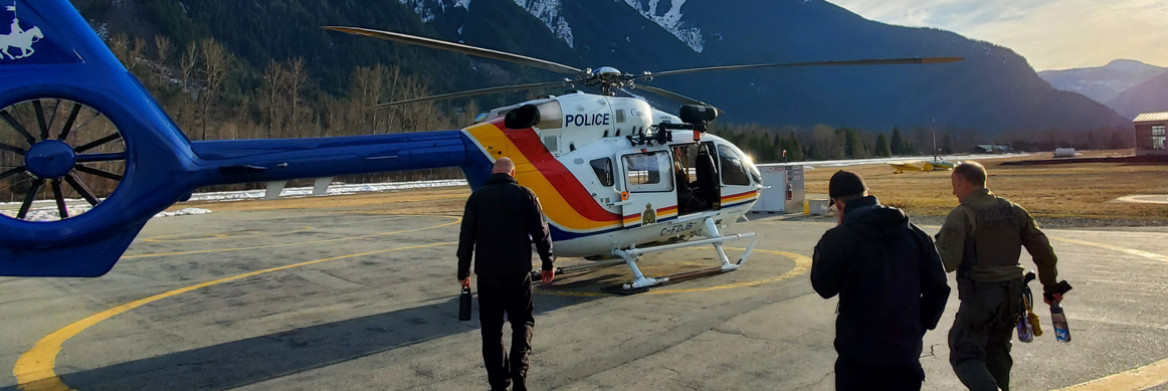What started off as a typical training day for RCMP Air Services and the Lower Mainland Integrated Emergency Response Team in British Columbia quickly turned into a real-life rescue. In March 2023, the crew had just finished a full day of hoist rescue training when their new skills were put to the test to rescue an injured skier in Whistler-Pemberton's backcountry.
The team members were returning to the Langley Airport base in the RCMP's H145 Airbus helicopter, when Corporal Josh Cropley, a rescue specialist, heard an SOS radio call for air support. A badly injured skier on the side of a mountain needed urgent evacuation. The H145 is typically used to support police operations but the crew of four quickly determined they were in the best position to carry out the civilian rescue.
The right place at the right time
"There were many complexities getting to the scene and figuring out who was going to make that happen in a timely manner because we were racing against the dwindling daylight," says Cropley.
Guided by Inspector Glen Fishbook, the operations officer of the Critical Incident Program, the team quickly devised a rescue plan.
"The biggest challenge was the co-ordination with the different parties involved. We were able to liaise with different search-and-rescue groups in the area to get everyone on the same page and come up with a plan," adds Cropley.
The H145 is one of few aircrafts in the region that has night-vision capability. Other search-and-rescue teams would not have been able to mobilize in time to catch the last moments of daylight, and the rescue would have been deferred until the next morning. "The skier was in serious danger of having to spend the night out there," says Fishbook.
A race against time
Less than hour of receiving the SOS call, the crew arrived at the scene of the injured skier in a remote area east of Cayoosh Mountain. Cropley and Fishbook quickly assessed the skier's severe leg injury and provided initial first aid. "She was very happy to see us. She was already extremely cold, sore and unable to move from the position she was in," says Fishbook.
Fishbook, who has years of experience in search-and-rescue missions, determined that the safest, and most efficient way to evacuate her was using the hoist operation. The crew's pilot, Special Constable Paul Copeland, and Constable Shane Wiens, the tactical-flight officer who operated the hoist that day, lifted her off the side of the mountain without incident to get her to the regional ambulance.
"The gold-standard for rescue is to have someone turned over to medical care within the precious golden hour," says Fishbook. "We were able to hand her over to British Columbia ambulance within the hour."
Airbus advantages
Acquired in 2018, the H145 Airbus helicopter is the only aircraft within the RCMP's Air Services fleet that has hoist rescue capability. It's a provincial asset for British Columbia, but has been deployed in national operations across the country.
The Critical Incident Program is one of the primary users of Air Services, relying heavily on the branch for its specialized support in operations. This includes everything from aerial surveillance to insert/extract hoist operations.
Civilian hoist rescues fall outside the usual scope of the Emergency Response Teams, and this was the first such rescue conducted by the team. As the police force of jurisdiction in British Columbia, the RCMP is ultimately responsible for search and rescue. "We all joined the RCMP to be able to help people, and we were in the right place at the right time, with the right resources," says Fishbook.
